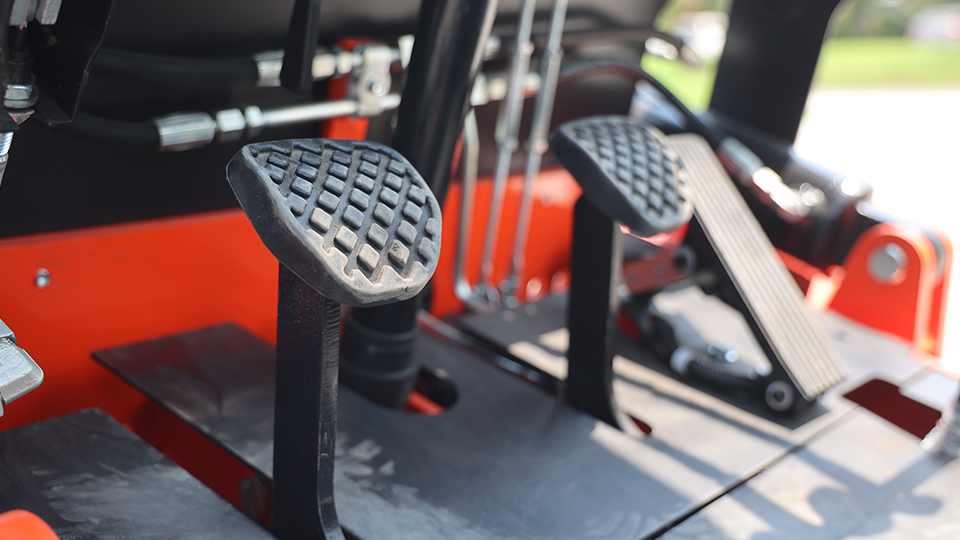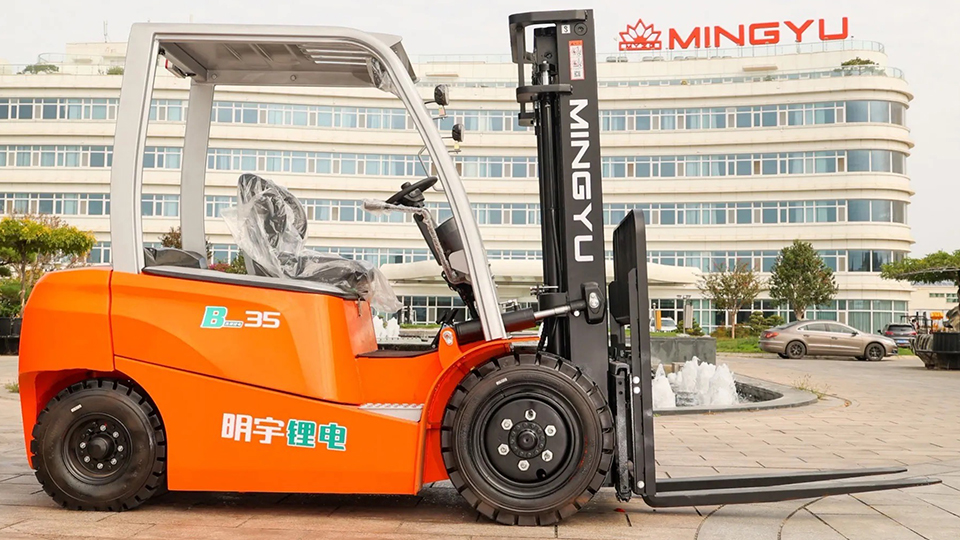
The role of a forklift operator is a foundational pillar of the modern supply chain, yet the remuneration for this essential work is anything but monolithic. While often categorized generally within the "Material Moving Machine Operator" class, a forklift operator's salary is a highly variable figure, influenced by a complex interplay of geography, industry, experience, and specialized skills. This technical article offers an in-depth, data-driven analysis of the average salary for a forklift operator in the United States, examining the core metrics, the critical factors driving compensation disparities, and the pathways for operators to maximize their earning potential.
To establish a baseline for analysis, it is essential to look at the broad national data. The Bureau of Labor Statistics (BLS) provides a comprehensive median wage for the overarching category of Material Moving Machine Operators, which includes forklift operators (categorized as Industrial Truck and Tractor Operators).

The BLS median wage of $46,620 provides a solid, statistically reliable middle ground for the entire occupation group. However, data specific to "Forklift Operators" often aggregates lower, hovering around the $41,000 mark. The considerable range between the 10th percentile and the 90th percentile ($36,500 to ) immediately signals that the term "average salary" is a loose generalization and necessitates a deeper exploration of the variables that create this substantial dispersion.
The variance in forklift operator compensation is systematically determined by four primary factors: Geographic Location, Industry Sector, Experience and Specialization, and Unionization/Shift Premiums.
Geography is arguably the single most impactful variable on salary. Compensation generally correlates with the local Cost of Living (COL), resulting in metropolitan areas and states with high COL offering commensurately higher wages.
1. High-Paying States and Areas:
States like Alaska () and regions in California (e.g., Los Angeles Certified Forklift Operator Average: ) frequently report the highest average salaries. This is often driven by highly competitive logistics markets, large-scale port and distribution centers, and high living expenses. In Los Angeles, for instance, the average hourly pay can climb to over $22.00 per hour.
2. Mid-Range and Lower-Paying States:
States in the South and Midwest, while offering a lower COL, typically report lower salary averages. For example, some Southern states report averages around the $36,000 mark. Notably, even within mid-range states, specific cities or regions can be outliers due to a local labor shortage or a concentration of high-paying companies.
The salary map for a forklift operator is a patchwork of regional economics, where a $50,000 salary in a low-COL area can represent a much higher purchasing power than a comparable salary in a major high-COL metropolitan hub.
The industry in which the forklift is operated significantly impacts the pay scale, reflecting the complexity, risk, and value of the materials being handled.
Specialized Industries Premium: Beyond these core sectors, niche areas consistently offer a premium:
Port and Rail Operations: Handling high-value, heavy cargo containers in a high-pressure, often unionized environment.
Cold Storage: Operating in below-freezing conditions, requiring specialized equipment and skills.
Manufacturing and Heavy Industry (e.g., Oil & Gas): Handling extremely heavy, dangerous, or unconventional loads.
While a basic OSHA-approved certification is a legal prerequisite for operation, an operator's specialized skill set and tenure directly translate into higher pay.
1. Experience Progression:
Note: Entry-level positions are frequently at the lower end of the national average, whereas experienced, top-tier operators can easily exceed the national BLS median wage.
2. Equipment Specialization: Operators certified on complex, high-reach, or highly specialized equipment often earn more than those limited to standard counterbalanced sit-down models. This includes:
Reach Trucks & Order Pickers: Used for very narrow aisle (VNA) warehousing, demanding exceptional spatial awareness.
Rough Terrain/Telehandlers: Primarily used in construction, requiring advanced training for stability and load-bearing across uneven ground.
Clamp or Slip Sheet Attachments: Requiring precise handling for delicate or non-palletized cargo.

A significant portion of a forklift operator's maximum annual earnings can come from factors outside the base hourly rate:
Shift Differentials: Night, graveyard, and weekend shifts typically carry a premium of $0.50 to $3.00 extra per hour, depending on the company and market.
Overtime: Due to the 24/7 nature of logistics, overtime is common, often paid at 1.5× or 2× the standard hourly rate, which can dramatically inflate annual gross income.
Unionization: Unionized operators, particularly in ports, large manufacturing facilities, and certain distribution centers, consistently report base wages and comprehensive benefits packages (including pension plans) that are significantly higher than the non-union average.
For an ambitious forklift operator, the salary ceiling is not fixed. A strategic approach to skill development and career progression can push annual earnings toward the highest percentiles.
The primary way to command a higher base wage is to increase operational versatility. This means:
Cross-Certification: Mastering multiple lift classes (e.g., Class I, IV, and V for electric, cushion, and pneumatic tire lifts) and specialized equipment (reach, turret trucks, side loaders).
Multimodal Operations: Acquiring skills in adjacent material handling roles, such as operating large industrial tractors, skid steers, or other light construction equipment.
Technological Integration: Proficiency in Warehouse Management Systems (WMS), Radio Frequency (RF) scanning, and even minor troubleshooting of the forklift’s battery/engine systems, all of which add value beyond simple driving.
Forklift operation is a common entry point into the lucrative logistics management structure. Transitioning to a supervisory role can result in a substantial salary increase, though it involves a shift from an hourly wage to a salaried position with greater managerial responsibilities.
A technical analysis of salary must consider the total value of the compensation package, as the non-wage benefits for a forklift operator can be substantial.
A. Employee Benefits:
Competitive employers, particularly large corporations and unionized shops, typically offer a robust benefits package that adds significant value:
Health and Dental Insurance: Comprehensive coverage is a standard offering in higher-paying positions.
Retirement: 401(k) plans with employer matching or defined-benefit pension plans (in union environments).
Paid Time Off (PTO): Vacation, sick leave, and paid holidays.
B. Safety and Insurance (Workers' Compensation):
Given the inherent risks of operating heavy machinery, workers' compensation is a critical component of the overall employment contract. This no-fault insurance provides coverage for medical expenses and wage replacement (typically about two-thirds of the average weekly wage) in the event of a workplace injury. Employers who invest heavily in comprehensive, OSHA-compliant safety training often see lower insurance premiums, which can indirectly contribute to their ability to offer higher wages.
The core question, "What is the average salary for a forklift operator?" yields a complex answer. The national median salary of approximately $$41,000 - $46,620 serves as a useful statistical anchor, translating to an hourly wage in the $20.00 to $22.41 range.
However, the practical reality is a broad spectrum defined by contextual factors. A non-union, entry-level operator in a low-cost, general warehouse environment may earn in the low $30,000s, while a tenured, specialized, unionized operator working consistent overtime in a major metropolitan port or a highly specialized manufacturing facility can realistically achieve an annual gross income of or more.
The profession is a critical entry point into the logistics sector, offering stability and tangible pathways for financial growth. For those seeking to maximize their earnings, the formula is clear: target high-demand, high-risk sectors (construction, cold storage, ports), pursue continuous training and specialization on complex equipment, and prioritize employers that offer union representation or premium pay for night/weekend shifts. The forklift operator's salary is a function of supply chain demand, technical proficiency, and geographical economic forces, offering a rewarding career for those who choose to invest in their expertise.
Name: selena
Mobile:+86-13176910558
Tel:+86-0535-2090977
Whatsapp:8613181602336
Email:vip@mingyuforklift.com
Add:Xiaqiu Town, Laizhou, Yantai City, Shandong Province, China